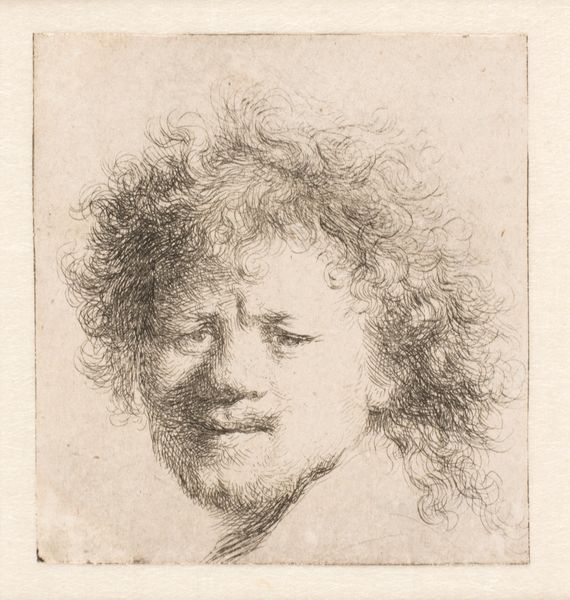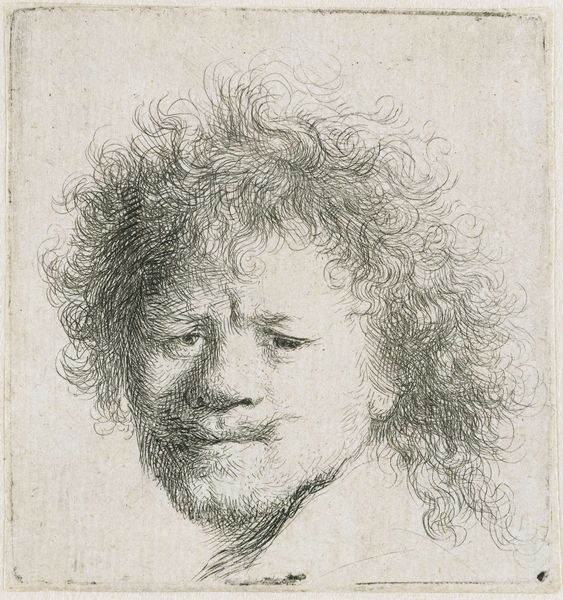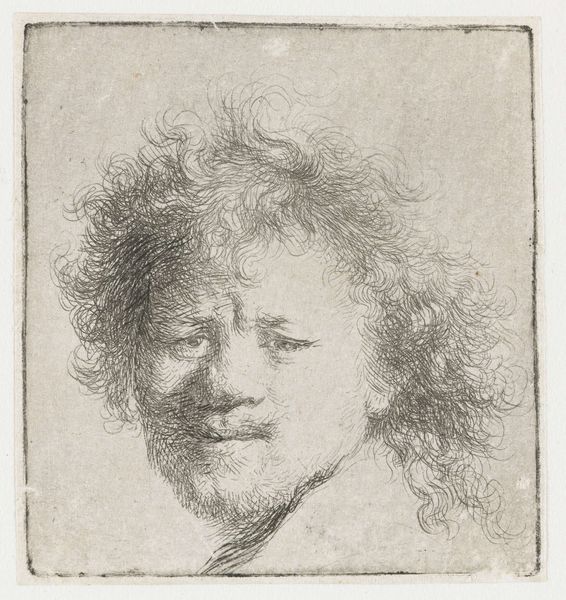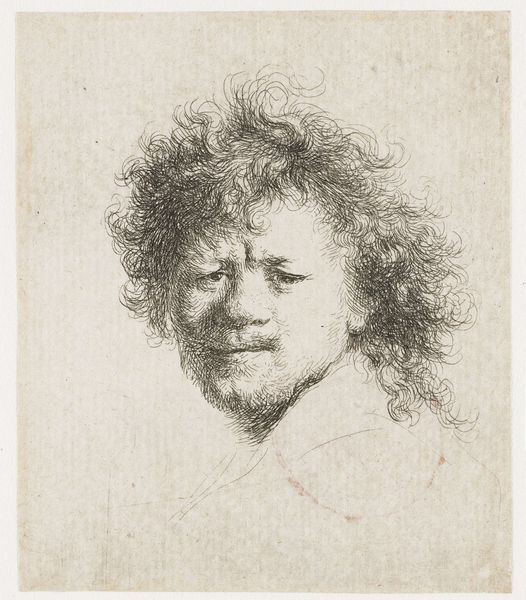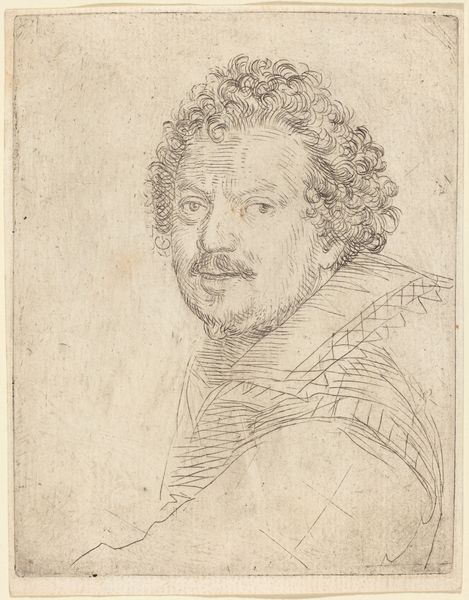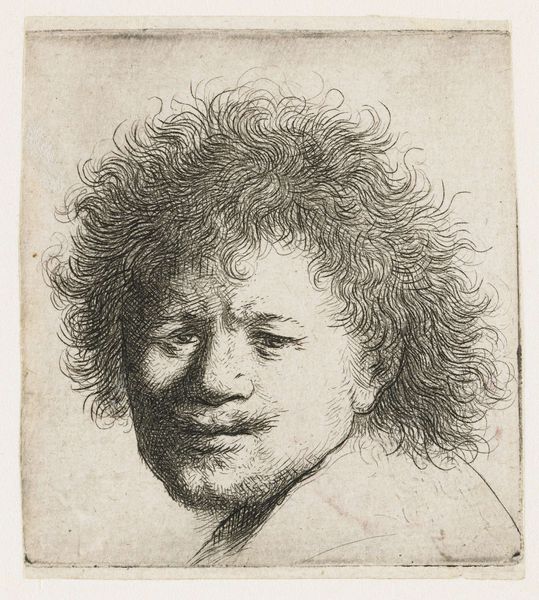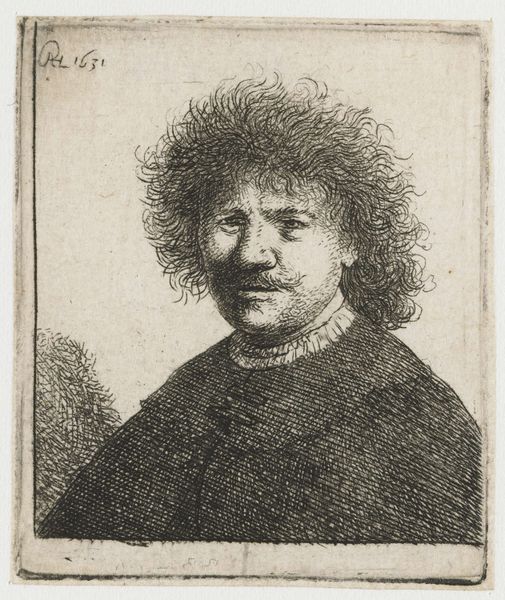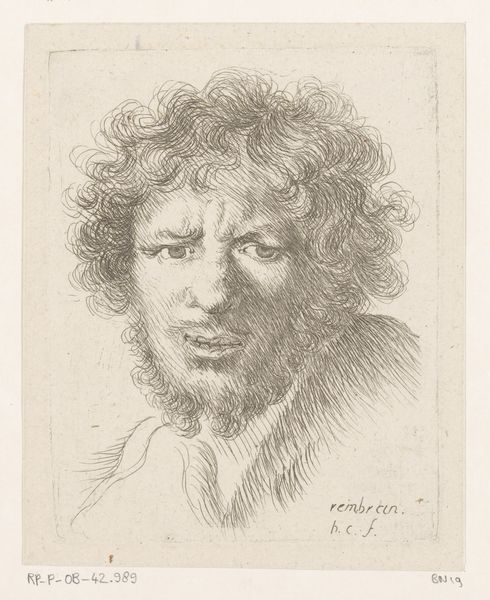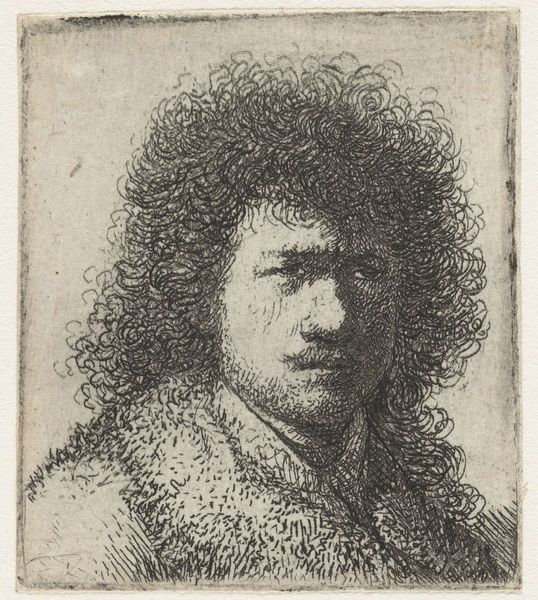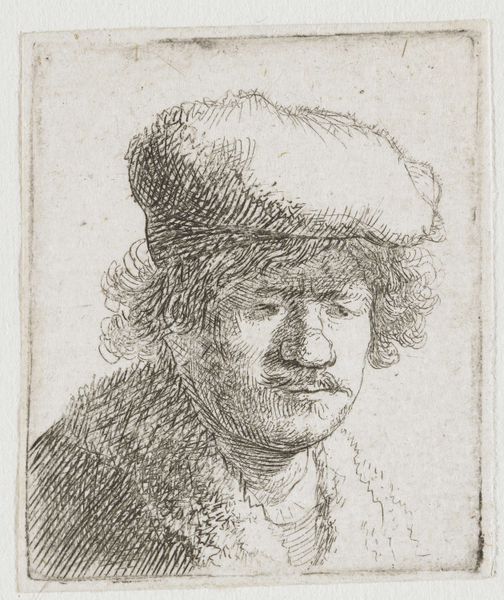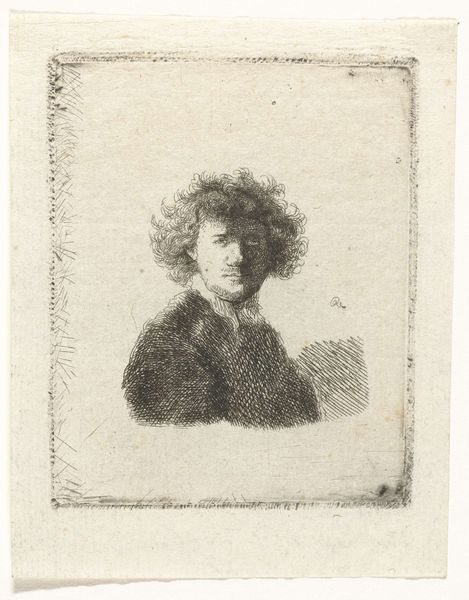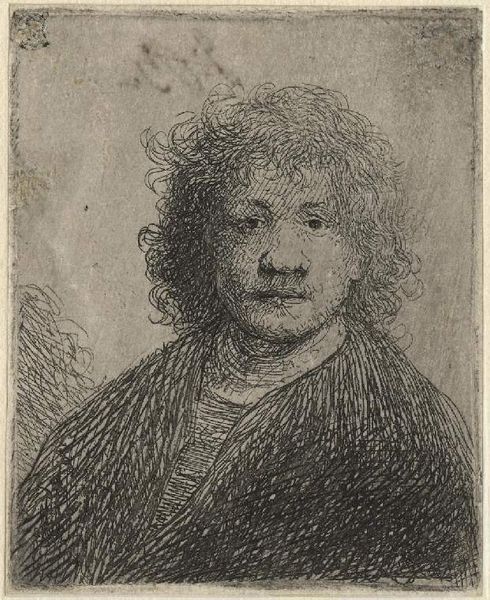
Dimensions: height 110 mm, width 85 mm
Copyright: Rijks Museum: Open Domain
Editor: So, this is a self-portrait by an anonymous artist, dating back to the 19th century. It’s called "Self-Portrait with Long Bushy Hair: Head Only," and it's an etching. I’m struck by how immediate and raw it feels. What do you see in this piece? Curator: What grabs me immediately is the physical process evident in the lines. Etching, unlike painting, is an indirect method. The artist manipulates metal, acid eats away at the design and that plate is then used to create the image. The accessibility of printmaking democratized images, placing the means of artistic production in the hands of more people. Think of the social implications. Was this artist part of a guild? How might the rise of printmaking impact existing artistic hierarchies, which tended to prioritize paintings, sculptures, or architecture? Editor: That’s fascinating! I hadn't really considered the impact of printmaking on the art world itself. It’s incredible to think that because of this shift, more artists and artisans could have access to their art practice. Curator: Exactly. Consider, too, how the reproduction changed the value of an image, of labor. Were more or fewer portraits commissioned, for example, if likenesses could be made more quickly by printmakers for wider distribution and at potentially less expense? What implications do you think it has for our understanding of portraiture today? Editor: Well, the existence of mass-produced images obviously exploded in the twentieth and twenty-first centuries with photography and digital media... so it really lays the groundwork for our current image-saturated environment. Thank you! Curator: My pleasure. This work is a great starting point to discuss the shift in how art objects and imagery began to be made and circulated in the 19th Century.
Comments
No comments
Be the first to comment and join the conversation on the ultimate creative platform.
